|
By MP&C - 16 Years Ago
|
Started the 12v conversion this weekend by picking up a GM 1 wire alternator from the local NAPA store. The first thing I noticed was the late model GM pulley has a slightly wider V groove than the generator pulley. With them both having the same shaft diameter, the first change was to install the 1952 Fomoco pulley on the alternator. Next, to keep the belts aligned, the rear mounting locations of the pulley were compared to the rear of the mounting bracket location. Although the front face of the generator is recessed, this was the same as the thickness of the mounting bracket, so it was a wash in this case. (generator has mounting bracket on back side of tab, on alternator it mounts in front) We came up with a difference of 7/16" between the position of the two, so the bracket will need some slight modification to keep the belt positioned.
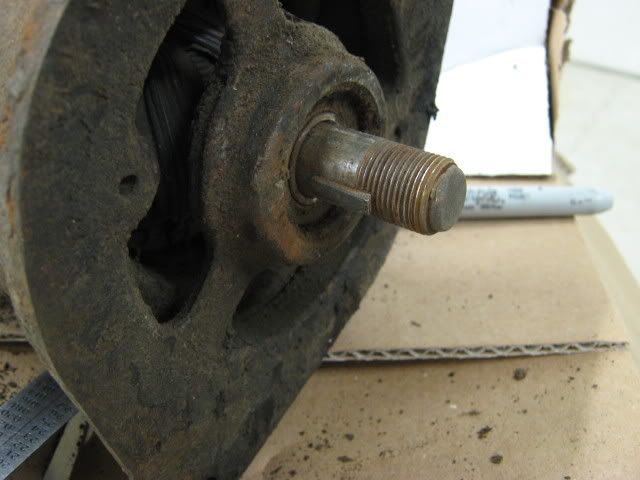
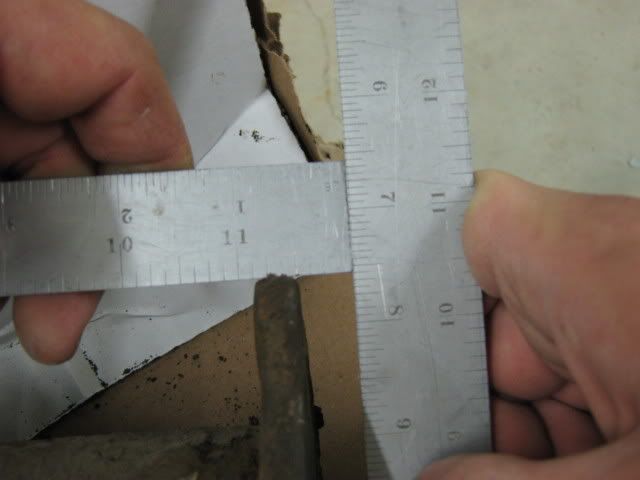
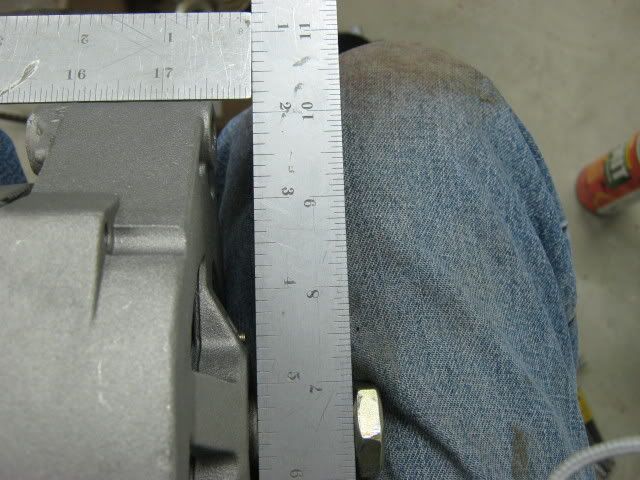
Prior to cutting the bracket, measurements were taken between the hole c-c for future reference.
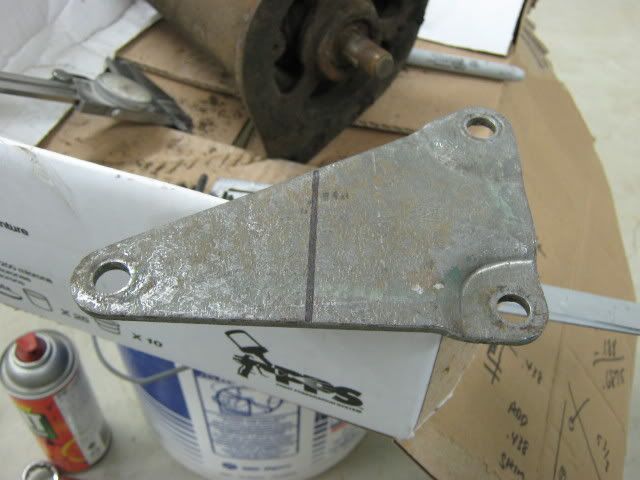
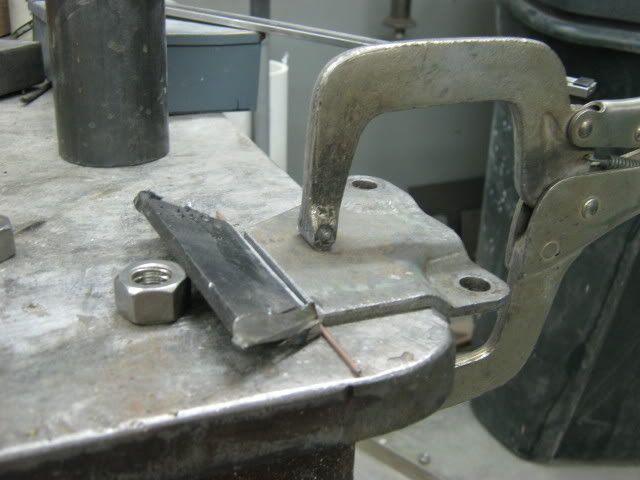
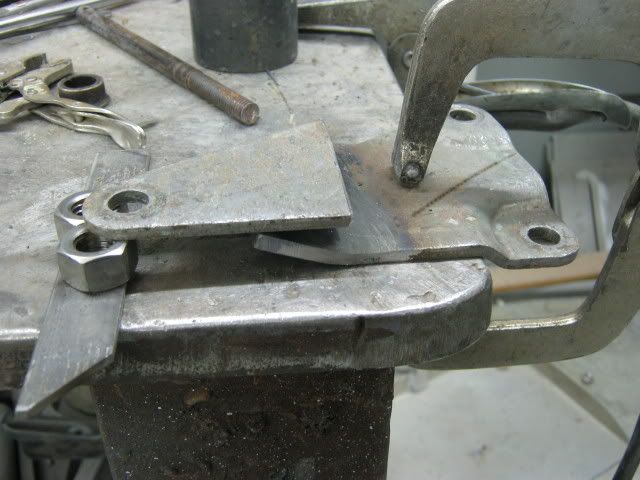
A 1/2-13 hex nut is about perfect for a 7/16" high spacer
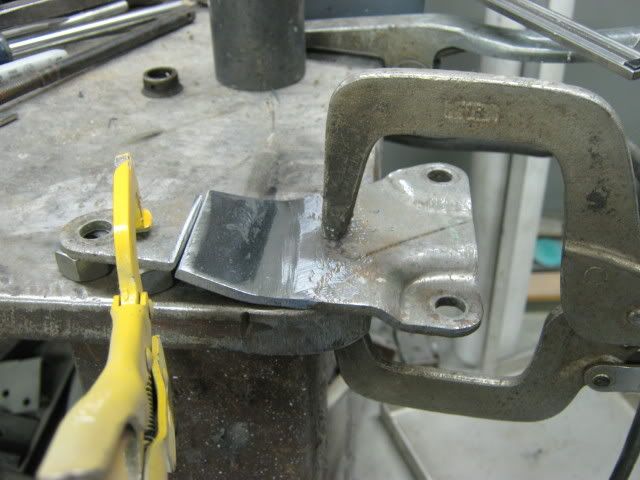
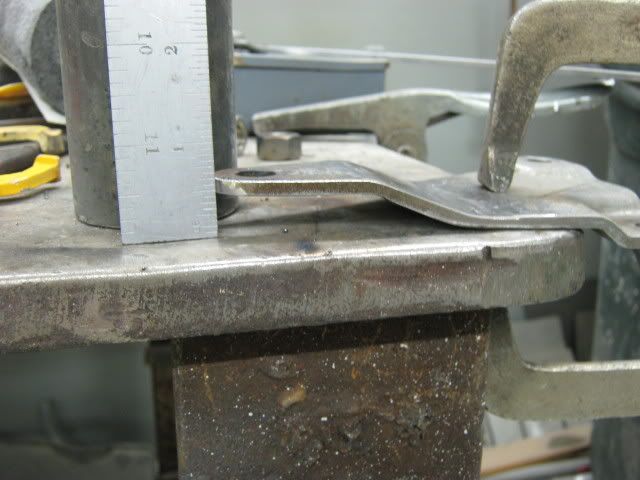
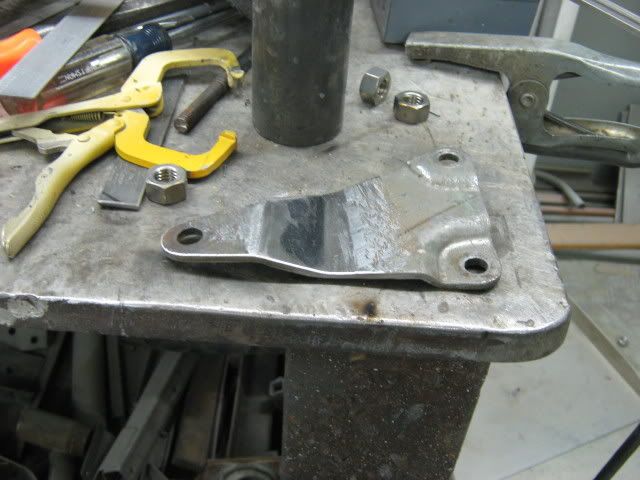
The rear generator bracket is rotated around to pick up the rear of the alternator bolt. The rear bolt is in a water jacket, in case things look a little damp in the pictures. (I got a little damp too!)
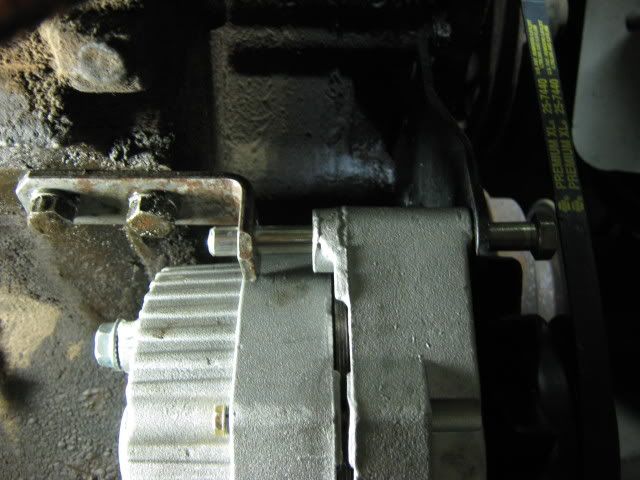
Looks like a spacer of about 3/4" long will be needed.
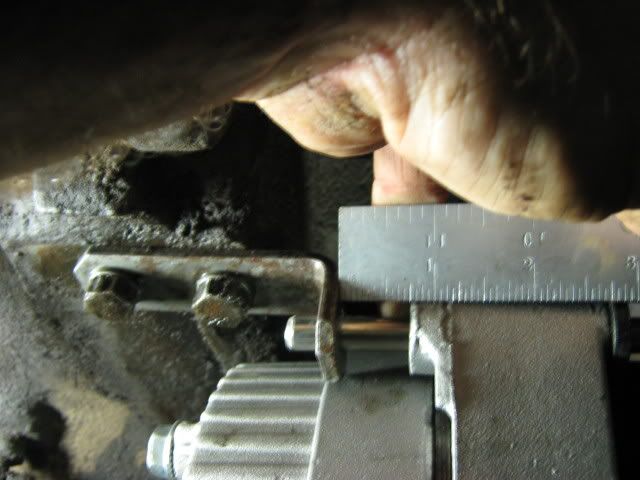
The lower bolt is slightly off, and positions the alternator a bit too close to the engine for my liking.
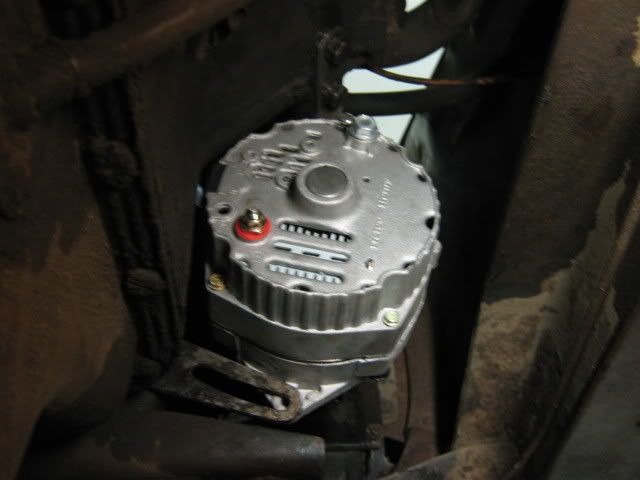
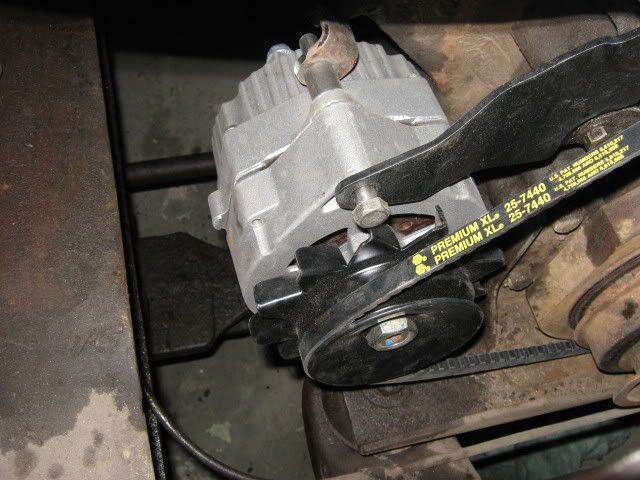
In the interest of not dismantling the complete engine, an add-on bracket is used.
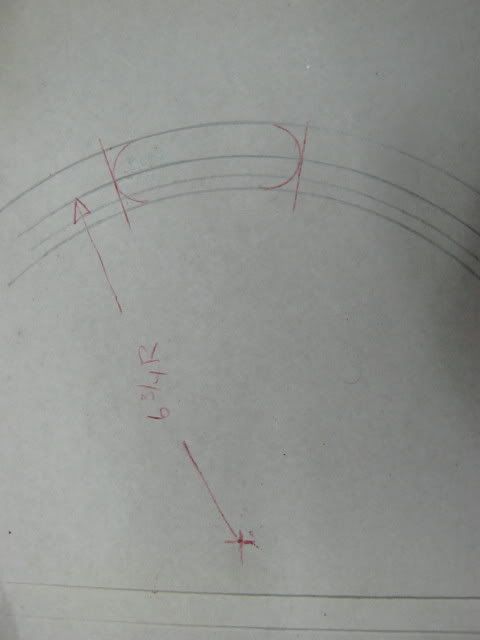
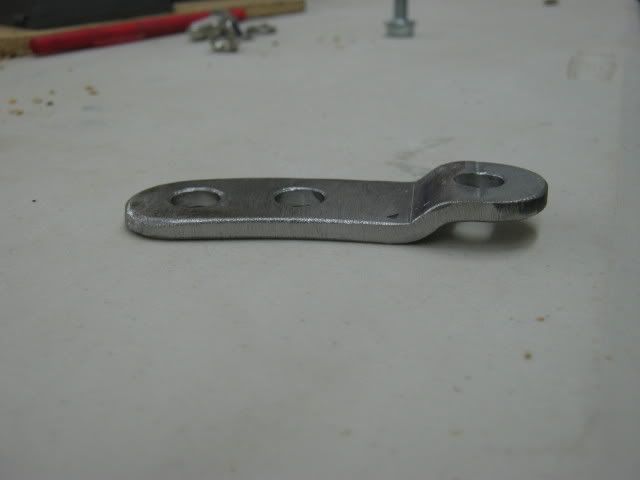
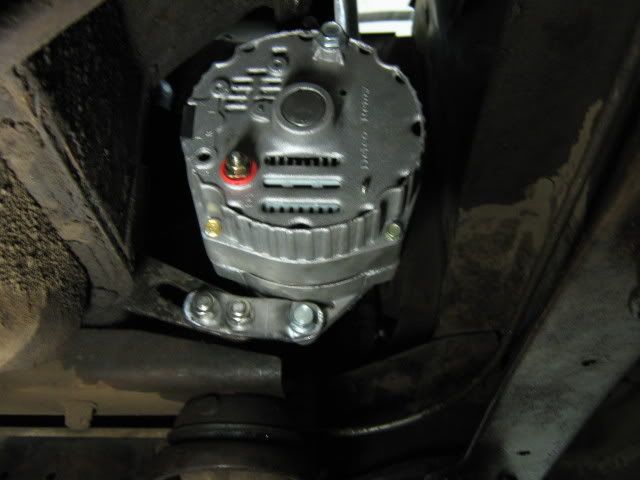
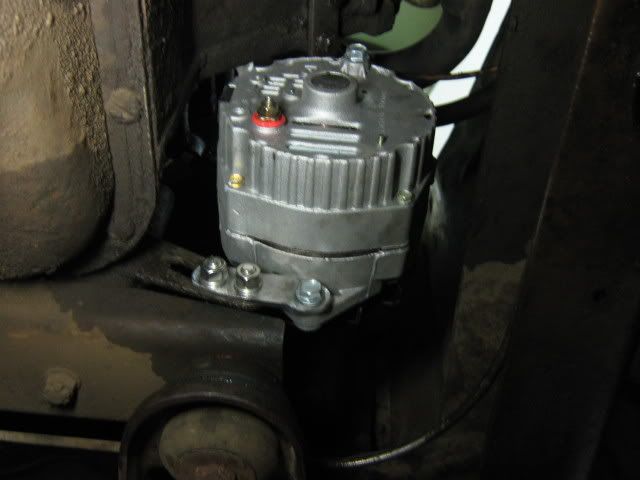
And that will be all for this weekend, as I'll need to get a slightly longer V belt now.
|
|
By simplyconnected - 16 Years Ago
|
Your setup looks very nice. How do you adjust your belt? Is there a slotted bracket somewhere?
Any alternator works much better than any generator. With a GM 1-wire, I understand you must rev the engine slightly to get it charging as the alternator doesn't sense the engine is on or off until pulley speed is fast.
I used a 1990 Mustang alternator on my '55 Customline. My alternator shop changed pulleys for ten bucks, (and he gave my five-groove pulley back to me). Mustang alternators have a small ignition switch wire which turns the alternator on or off with the key. It can be attached to the distributor + side.The Mustang alternator uses the original Y-Block brackets with the addition of one long spacer on top, and a "Z" bracket to the adjustment bracket on the bottom. As with the original setup, the new alternator belt is fully adjustable. I don't want to rain on your thread, but check out my retrofit. It was done years ago.
|
|
By MP&C - 16 Years Ago
|
|
Thanks for the response! The factory slotted adjustment is still intact, however as you can see in this picture, the alternator is about against the engine block, and the slot is about out of adjustment. Not too good for installing and tightening belts. 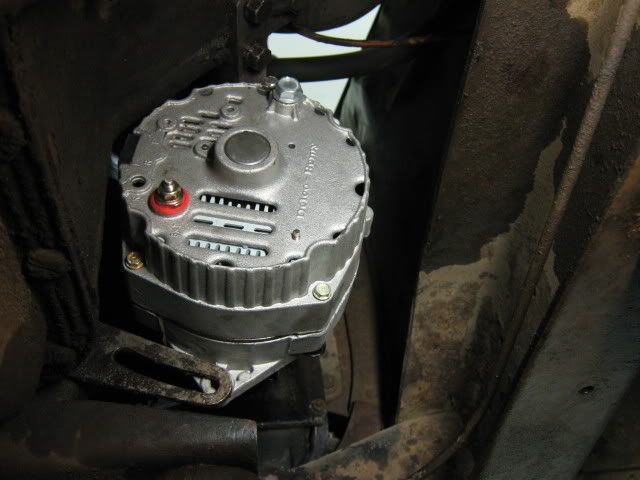
Looking at the front of the block, it would have been a major undertaking to remove the slotted bracket to prep it for modification, unlike the top front bracket which was held on by only two bolts. So my solution was to leave the factory bracket intact, and use this bracket I fabricated: 
......to extend the range of the factory slotted bracket and still get the mod done in a day. It gives me an inch or so of adjustment, and if that is not enough, the center bolt can be removed for even more adjustment. I did some calculating of belt sizing and alternator positioning on AutoCAD today, so I've got it narrowed down pretty good based on the size that didn't fit yesterday. So I'll see what they have close to the sizes I came up with. 
I appreciate the input on the Mustang alternator, I was just trying to find something with an internal regulator to eliminate some of the clutter on the firewall. You don't see much documented on these conversions, so I thought I'd do so in case someone else had similar plans. This will be my first use of a GM 1 wire, but with a 5 speed Clark trans, a 3 speed White Auxiliary, and tandem 8.50:1 Rockwells, there will be ample opportunity to rev the engine a bit to excite the alternator: 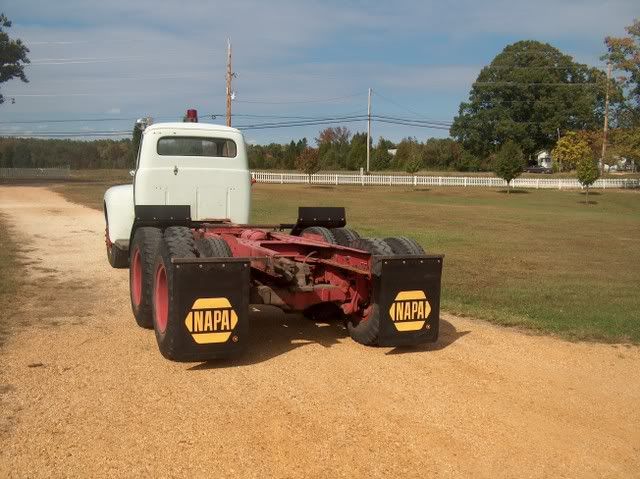
The last conversion to alternator I did was on a 56 panel, 272, and I again used an internal regulated alternator. I think it was using an early 80's toyota or such P/U, the only mod done to the brackets were to cut off the rear tab on the generator mount and move it forward and weld to hold the back side of the alt. Belts lined up perfect, I just couldn't remember exactly which alternator it was to use it again.... 
|
|
By charliemccraney - 16 Years Ago
|
|
I'm using a GM 1 wire alternator. I have no problems at all with it. It knows the engine is running when rev'd to about 1500rpm. After that initial rev it puts out 14.4 volts until the engine is shut off. You should have no problems with it. Keep the pictures coming!
|
|
By simplyconnected - 16 Years Ago
|
|
The beauty in all this is availability and cost. Junk yards throw scores of good alternators away every day. All of them are internally regulated. I would say an average capacity is around 100-amps. For the cost of changing pulleys and making a couple brackets, the benefit of a modern alt sure beats those 35-amp generators from the past. Nice job on your retrofit. You are going in the right direction converting to 12-v.
Six volt components cost twice as much as 12-v (especially car batteries). Try to find a 6-volt GPS, power inverter to 115vac, cell phone charger, burglar alarm/remote start, stereo CD player, A/C compressor, W/S wipers, etc. Oh, I forgot to mention: The '90 Mustang alt is internally regulated. The wires go to Batt POS & NEG, and the key switch. Pretty much single wire with the addition of the key sw wire. It also charges immediately upon startup. Remote Start Systems keep cranking the starter until it sees 14 volts (an indicator your engine is running because the alt is producing power).
|
|
By MP&C - 16 Years Ago
|
|
Just for future reference, is there a year range you look for in the Mustang alternators? V8/V6/4 cyl, or no difference? Thanks!
|
|
By simplyconnected - 16 Years Ago
|
|
MP&C (5/5/2009)
Just for future reference, is there a year range you look for in the Mustang alternators? V8/V6/4 cyl, or no difference? You get a choice. The one I like for Y-Blocks is this alternator:

It outputs 75-amps, and brushes are under $4. Here are the applications:
| FORD | AEROSTAR | (1987 - 1991) | | FORD | BRONCO | (1987 - 1991) | | FORD | BRONCO II | (1986 - 1989) | | FORD | E-150 ECONOLINE | (1987 - 1991) | | FORD | E-150 ECONOLINE CLUB WAGON | (1988 - 1990) | | FORD | E-150 ECONOLINE SUPER | (1987 - 1991) | | FORD | E-250 ECONOLINE | (1987 - 1991) | | FORD | E-250 ECONOLINE CLUB WAGON | (1988 - 1990) | | FORD | E-250 ECONOLINE HD | 1991 | | FORD | E-250 ECONOLINE SUPER | (1987 - 1991) | | FORD | E-350 ECONOLINE | (1987 - 1991) | | FORD | E-350 ECONOLINE SUPER | (1987 - 1991) | | FORD | E-350 ECONOLINE SUPER WAGON | (1988 - 1990) | | FORD | F-150 | (1987 - 1992) | | FORD | F-150 SUPER CAB | (1987 - 1992) | | FORD | F-250 | (1987 - 1994) | | FORD | F-250 SUPER CAB | (1987 - 1994) | | FORD | F-350 | (1987 - 1994) | | FORD | F-350 SUPER CAB | (1988 - 1994) | | FORD | F-450 SUPER DUTY | (1990 - 1994) | | FORD | F53 | (1991 - 1994) | | FORD | LTD COUNTRY SQUIRE | 1986 | | FORD | LTD CROWN VICTORIA | 1986 | | FORD | MUSTANG COBRA | 1993 | | FORD | MUSTANG GT | (1987 - 1993) | | FORD | MUSTANG LX | (1987 - 1993) | | FORD | MUSTANG SVT COBRA R | 1993 | | FORD | RANGER | (1986 - 1991) | | FORD | RANGER SUPER | (1986 - 1991) | | FORD | TEMPO GL | (1984 - 1985) | | FORD | TEMPO GLX | (1984 - 1985) | | FORD | TEMPO L | (1984 - 1985) | | FORD | THUNDERBIRD | (1987 - 1992) | | FORD | THUNDERBIRD LX | (1988 - 1993) | | FORD | THUNDERBIRD SC | (1989 - 1993) | | FORD | THUNDERBIRD SPORT | (1987 - 1988) | | LINCOLN | CONTINENTAL | 1986 | | LINCOLN | TOWN CAR | 1986 | | MERCURY | COUGAR LS | (1988 - 1992) | | MERCURY | COUGAR XR-7 | (1988 - 1993) | | MERCURY | GRAND MARQUIS | 1986 | | MERCURY | GRAND MARQUIS COLONY PARK | 1986 | | MERCURY | TOPAZ | (1984 - 1985) |
If you like the more modern 130-amp Mustang alternator, here it is:

Notice the fan is on the inside. Here are the applications: | FORD | CROWN VICTORIA | (1995 - 1999) | | FORD | CROWN VICTORIA LX | (1995 - 1998) | | FORD | CROWN VICTORIA POLICE INTERCEPTOR | (1996 - 1998) | | FORD | CROWN VICTORIA S | (1995 - 1998) | | FORD | F-150 | (2002 - 2004) | | FORD | MUSTANG GT | (1996 - 1998) | | LINCOLN | TOWN CAR ANNIVERSARY | 1996 | | LINCOLN | TOWN CAR CARTIER | (1996 - 1997) | | LINCOLN | TOWN CAR EXECUTIVE | (1996 - 1997) | | LINCOLN | TOWN CAR SIGNATURE | (1996 - 1997) | | LINCOLN | TOWN CAR TOURING EDITION | 1997 | | MERCURY | COUGAR XR-7 | (1995 - 1997) | | MERCURY | GRAND MARQUIS | (1995 - 1997) |
|
|
By PF Arcand - 16 Years Ago
|
|
I believe on this site or in YBM, there was an article some time back on converting a Y-Block to a 90s Ford Escort alternator. It was fairly straight forward with minimum mods. Seems everybody wants to use G.M. stuff. Why on a Ford? Anyway, in my case, running on a "stock collector plate", an alternator is very obvious, & pushing the rules.
|
|
By ejstith - 16 Years Ago
|
|
Do you have the wiring diagram for the Ford alternator? I like the idea of a 3 wire alternator but so far my old generator is workin' just fine.
|
|
By simplyconnected - 16 Years Ago
|
|
1990 Mustang alternator diagram: 
Notice the top three BIG BK/O (black with orange) wires that all go to BATTERY? Ford couldn't run 75-amps through two wires, so they use three. White w/ Black goes from one plug to the other (for feedback to the regulator). The third wire LG/R, senses the IGNition switch is on. Ground is through the aluminum case. If you want to copy the picture, RIGHT click on it and choose "Save Target As...". Then save it to your folder of choice. Dave Dare
|
|
By MP&C - 16 Years Ago
|
Paul, I don't think anyone specifically wants to put GM stuff on their Ford, I think in the interest of simplicity, many people are steered that direction for conversions (hook up one wire and you're done). I know now that Dave has given a pretty concise list and diagram for the Ford applications (Thanks!) it will permit other options. I have yet to see the article you're referring to, but perhaps a link would be all the persuasion needed to keep Ford stuff in a Ford  I got the new alternator belt in, and it placed the alternator just where I wanted it, although the bracket I made is at the end of it's limits (in the end of the slot) This calls for a another new bracket, just got it painted this evening, will get it installed this weekend. Robert 
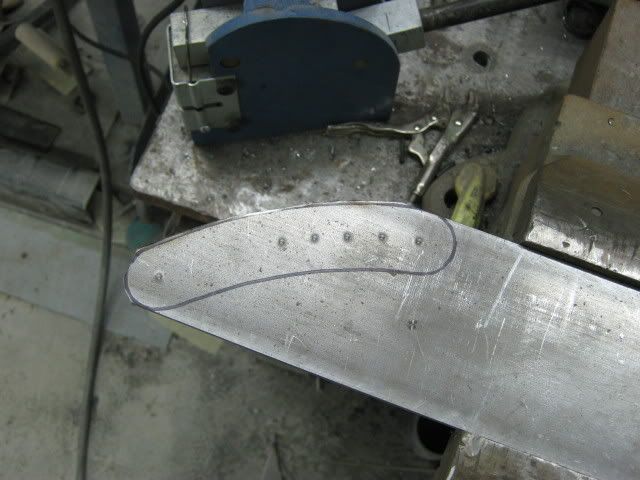
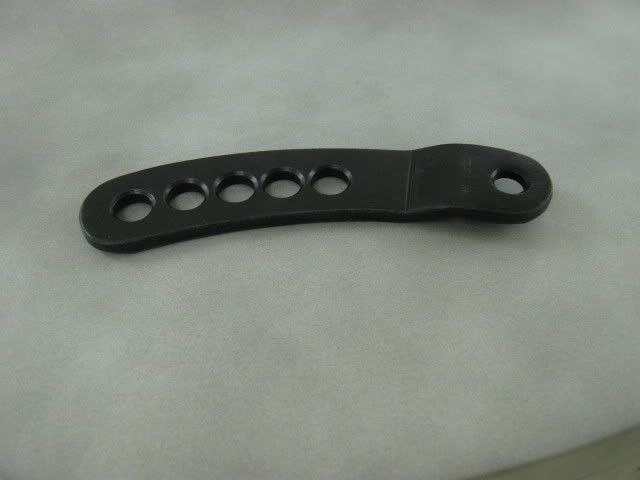
|
|
By charliemccraney - 16 Years Ago
|
Well, you already made the bracket, but why not just get a shorter belt?
How are you forming the offset of that bracket?
|
|
By simplyconnected - 16 Years Ago
|
|
MP&C (5/7/2009)
...I think in the interest of simplicity, many people are steered that direction for conversions (hook up one wire and you're done)... Robert, my purpose is to let people know that a GM 1-wire alternator works differently. It has a unique quirk that most Ford users aren't used to. As long as that is understood, then, ok! It's NOT simply a one-wire and you're done (although it looks like it). In order to eliminate the small "sense" wire that Ford uses, GM made a sacrifice that may play hell with a remote start or other accessories. Yes, I come from Ford, but I also believe the best part for the application should be considered. In your case, the Mustang alternator works like you would expect, pumping 14-volts as soon as it starts turning, but it uses two wires (battery and sense) instead of one. As long as you know to goose the gas past 1,500 rpm to get your GM alternator going, and you are comfy with that, ok! Don't forget later on, upon initial start your battery is draining while idling; it doesn't mean the alternator is broken. That is how the 1-wire must work. Most non-electrical guys would jump on the GM alternator because it looks so easy. I don't want anyone to buy one and find out it really isn't what they expected it should be, that's all. Most places won't take back electrical devices, so it's "buyer beware." - Dave
|
|
By MP&C - 16 Years Ago
|
|
Charlie, the first bracket really didn't give as much adjustability as I'd like. (that hindsight thing) It was designed around the belt sized to the original generator. I wanted to have more options available in case it slings a belt on the road someplace and the size used on the truck wasn't in someone's parts store. The bracket was bent up on a 2' Diacro press brake, but could as easily have been done in a vise using a hammer. 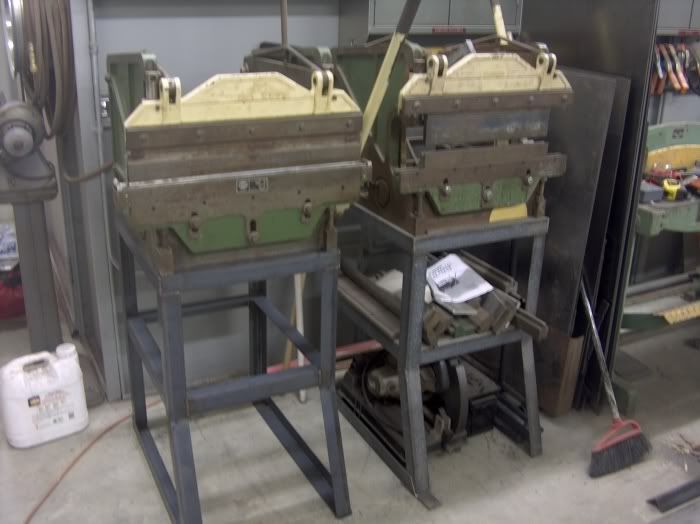
Dave, thanks for the clarification. Although this truck will have only the basic stuff for electronics, it's nice to be able to compare the features pro/con to make an informed decision. I didn't find much available in researching the 12v conversions three weeks ago when I started this venture, that's why I thought to start a thread to document it. Perhaps you could post your conversion in more detail here as well to have a better resource for future use.
|
|
By ejstith - 16 Years Ago
|
|
Ok, a couple of more questions. Where can one get the brackets to change from a generator to an alternator without "fabbing" them up? Another thing what do you do with all of the wires that went to the original regulator? Thanks...
|
|
By simplyconnected - 16 Years Ago
|
|
ejstith (5/10/2009)
...what do you do with all of the wires that went to the original regulator?... I want to say, "just throw them away" but some Ford regulators use these posts as a tie-point, to pick up power for other things (like the horn relay). Since the regulator will no longer be used, take it & the capacitor (and ground wire) off. The regulator wires (GND, Field & Armature) going to the old generator: Remove them. They aren't big enough to carry 75-amps. The regulator's BATTery wire can be spliced to the horn relay. I do not wish to hijack this thread or bash the 1-wire alternator, but I am a licensed Electrician and a Ford employee of over 35 years. The correct way to wire, includes a three-wire alternator, and a central tie-point where constant +12-volt wires should connect, including the key switch. Remember, the key switch feeds your ignition circuit. A small voltage drop drastically degrades ignition efficiency. If that happens, the "sense" wire calls for more alternator voltage until it comes up to 14 (at the sense wire). A 1-wire alt has no "sense" wire. The stranded copper #6-AWG alternator wire can go to the battery side of the starter relay, or to the battery. This wire is usually not fused. Two things play a vital roll: The wire is in free air, and it is short. Otherwise, #6 could never safely carry more than 60-amps without overheating. I also run a #1-AWG welding wire from the bell housing/starter area to the battery neg. If you need a good ground for your distributor, this area is a good source and it's already connected to the rubber mounted engine. A good ground like this, will wake up your starter motor.
Dave Dare
|
|
By MP&C - 16 Years Ago
|
Boy, this has been a long time on the back burner, but finally got the distributor and oil pump squared away. (too much time working on everyone else's stuff!) In addition to the 12V conversion, I swapped out the old truck distributor (along with the governor lines) with a remanufactured '64 PU 292 distributor. Also, the factory tang drive oil pump was swapped out with a late 50's 312 rebuilt pump (hex drive), both from NAPA. Now for my predicament, the Lincoln block must have a taller deck height than the Ford cousin. The 292/312 oil pump shaft had an overall length of 8.06, much too short for what I needed. The next length Ford has in the .250 hex shaft is for the FE, a 8.50 length. Comparisons of the old vs the new showed I needed a length of 9.25 overall. My first thought was to find some Chrome Moly or 1144 Stress proof in a .25 hex that I could just cut to length and install, no fuss no muss. CM is no longer made in that small a hex, and the 1144 was about $300 for a single piece. Much too rich for my blood. A buddy of mine has a nice machine shop set up at home, and we finally decided to use some A2 tool steel in .438 round, and he machined a 1" long hex on each end of a 9.25 piece and flame hardened the ends ($10 in material). Got it installed today and took the beast out once again to blow the dust off.
Note the scaffolding set up, just right for an F7.....
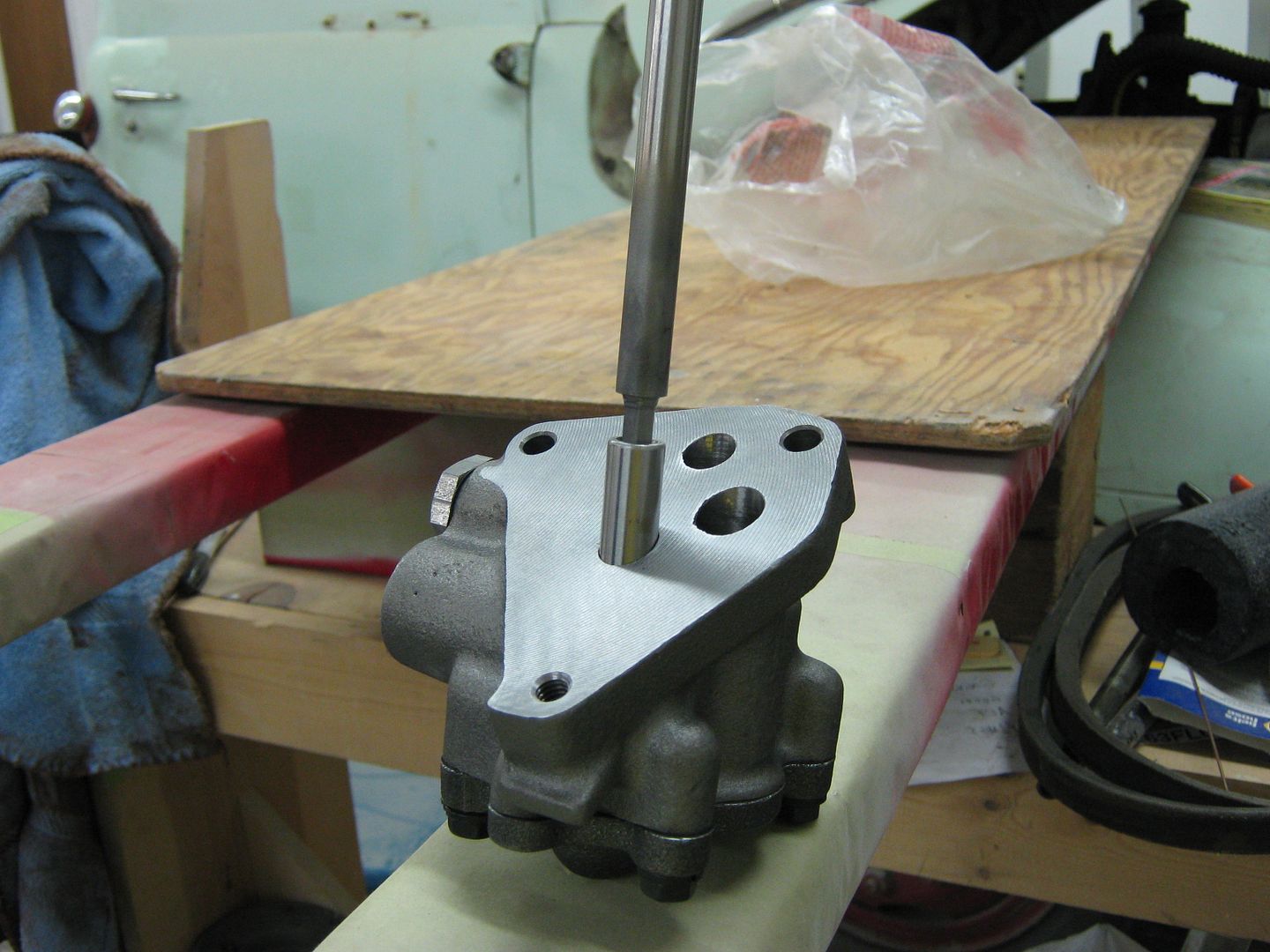
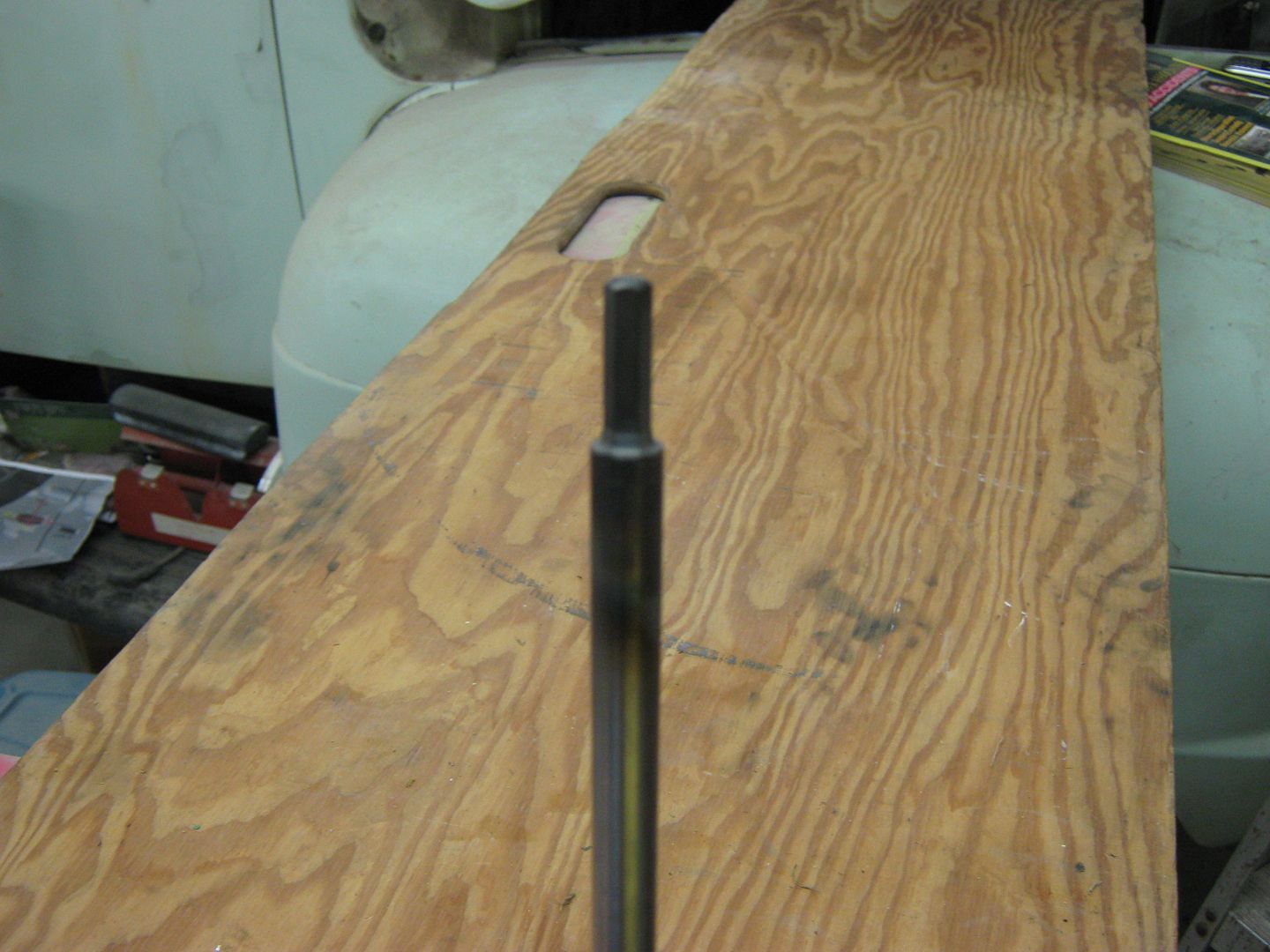
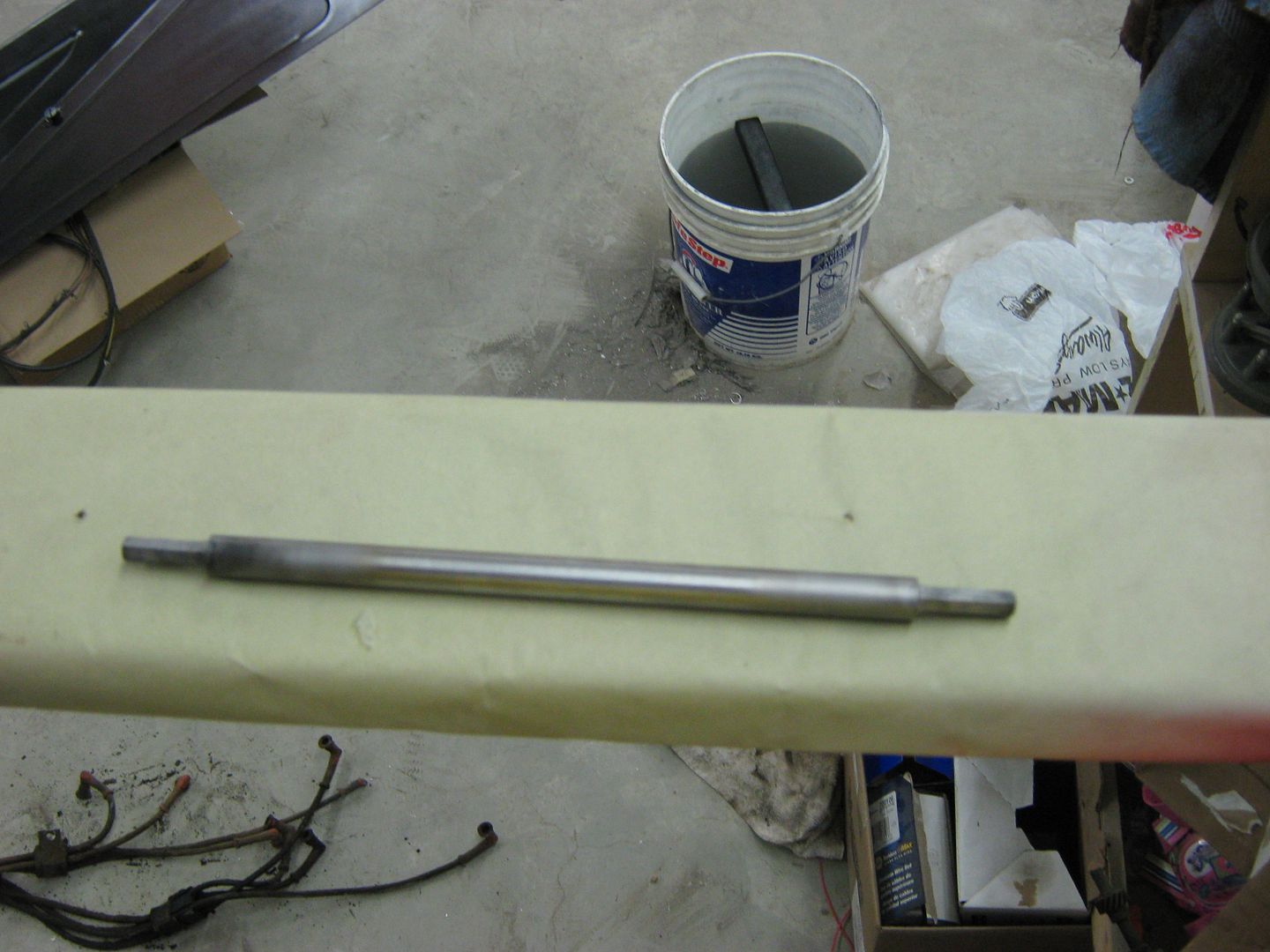 Dave, thanks for posting the connection info on the Mustang alternator, it will come in handy tomorrow as we wire up a 65 Fairlane to get it ready for the strip (in the assembly stage now). 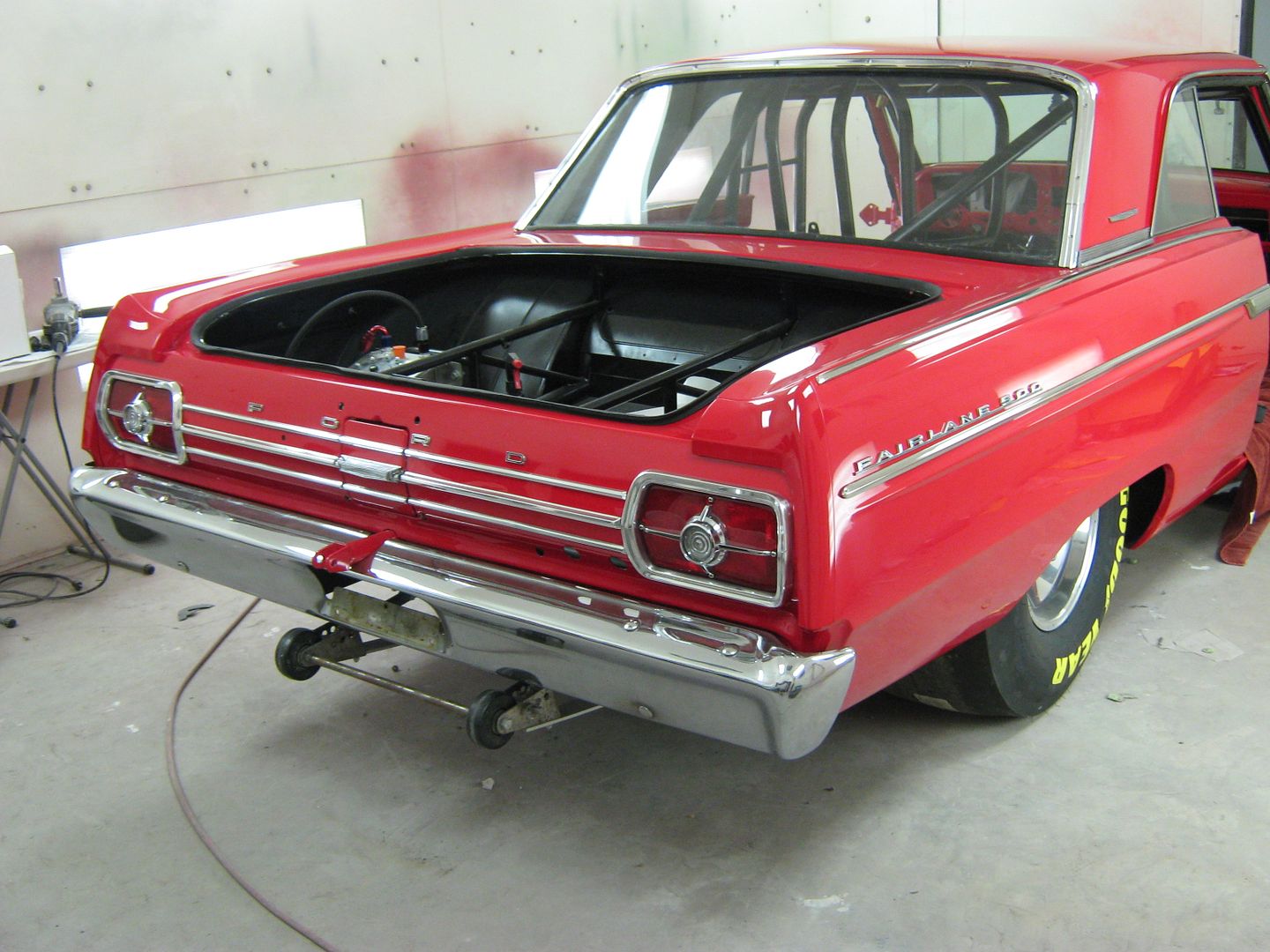
|
|
By charliemccraney - 16 Years Ago
|
|
Very cool!
|
|